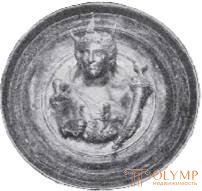
Half a century after the death of Alexander the Great, before the diadochi, that is, the successors of the courageous conqueror, founded their own dynasties in various states into which his kingdom fell, and settled in their new capitals on the banks of the Nile, Tigris and Orontes and in Asia Minor. Only from this time, under the influence of the new order of things, the culture and art of Hellenism, which has become international, is developed, which are commonly called Hellenistic. The basis of new culture and new art remained Greek, not only in the states that were Greek for a thousand or more years before, but also in the cities of Egypt, Mesopotamia and Syria that belonged to the diadochi. At the same time, the boundaries between Hellenism and barbarism faded away. Greek art began to perceive the second Asian and Egyptian currents. Foreign gods have infiltrated it. It set out to reproduce the types of foreign peoples and reflect the life and customs of the African and Asian coasts.
But even more than the spirit of foreign land, the spirit of large urban centers became tangible in Hellenistic art — the international spirit that, based on Alexandria, the city of Diadochi, developed under Ptolemy before all others and earlier than all who had decayed, quickly spread throughout the civilized world . The needs of the new big cities were expressed primarily in Hellenistic architecture. The pragmatism of the population of such cities directed all other branches of art in the direction of constantly intensifying realism. Metropolitan impressionability, striving for a "lost paradise" of nature, led both in painting and sculpture to the development of the landscape. For its part, the theory that loved to play with words and concepts, encouraged art to personify abstract objects, and strongly developed sensuality sought to celebrate their orgies not only in life, but also in art.
Addiction to the playful could not do without the image of Eros at every step in the form of a child and inhabited the world with many winged gods of love. Nevertheless, the further development of Greek art under the influence of all these new trends was so organic and natural that one involuntarily wondered if the development of art would not have gone the same way even if the events of world history had turned Hellenic world in Hellenistic, not accomplished?
The architecture of the new magnificent cities that emerged at this time, such as Alexandria on the Nile, Antioch on the Orontes, and Seleucia on the Tigris, is, in fact, known to us only by the stories of later writers. These stories leave no doubt that the public buildings in these cities were luxurious and that their plans were distinguished by their extreme correctness, which was often picturesquely adapted to the conditions of the area. Among the buildings, the royal palaces, which grew to the size of entire parts of the city, stood out in particular. In Alexandria, such buildings as the museum, in which the whole republic of scientists, the public library and the main sanctuaries found shelter, were connected with them. All the larger sizes were also taken by buildings designated for folk games — theaters, lists, exercise facilities that turned from simple arenas to spacious palestras, and extensive gymnasiums connected with baths (therms).
The Hellenistic dwelling house retained the Old Hellenic division into the male and female branches. The transformation of the Hellenistic dwelling into a peristyle structure described by Vitruvius ended at that time. The center of the house, artistically trimmed, constituted a courtyard with a colonnade, and, if necessary, there could be several such courtyards; adjoining the courtyard halls and rooms, usually receive light through it. The walls were lined with metal sheets or stone slabs or plastered. The surface of the walls was divided into parts in the vertical direction by semicolumns or pilasters, and in the horizontal direction - by a clear division into a socle, a main field, a frieze and a cornice.
For all that, the main artistic element of architecture remained the column. Galleries with columns, courtyards with columns, gates with columns in the Hellenistic cities played an even more prominent role than anywhere else. In addition to buildings with columns and a beam entablature, erected on several floors, now received the right of citizenship and another kind of building - vaulted - began to take root more and more . The opinion that the vaulted and domed buildings in all European architecture originate from similar buildings of Servistan and Firuzabad in Persia, as Delafoua believed, undoubtedly cannot be accepted even with the proviso that their origin should not be attributed to the times of the Sassanids , but even earlier era Arsakid. Already in Babylon there was no shortage of arches, and from Babylon lay a direct route to Seleucia and from there to Antioch and Alexandria. Ancient writers reported that the temple of Serapis, the Greek God of the Greeks, in Alexandria, was in its lower parts with vaults. Back in 1871, Fr. Adler insisted that the code should be recognized as belonging to the Hellenistic architecture, and from that time on this view were joined by famous archeologists and learned architects.
Unfortunately, from all the eastern large Hellenistic cities, which modern architecture has endowed with original and magnificent temples, although they were probably built mostly from fragile materials, for example made of brick, absolutely nothing has been preserved. During the excavation of Theodore Schreiber in Alexandria, Alexandrian capitals of God were brought to light, distinguished by a rare freedom of mixing styles and an equally rare grace of execution. Until now, the history of architecture on the Nile, Oronte and Tigre remains a page filled with guesses and assumptions.
The history of Greek artists, even for Pliny the Elder, completely dried up in the first decades of the 4th century. BC e., and only approximately in the middle of II. again the names of the masters, who had a meaning, appear, although far from the same as those of ancient artists. It is very difficult to reveal the particle of truth that may lie at the basis of this testimony. In any case, starting from the II century, in the ancient world only the names of individual artists or individual groups of artists emerge, and many of these names are known to us only by inscriptions on the surviving works of art. Thus, in the history of the development of art, artistic works are now again highlighted, and not artists.
The art of Alexandria, this center of the intellectual, scientific, and literary life of the epoch in question, is only barely associated with the names of local artists. Only since the time of the studies of Gelbig, Michaelis, Mau, and Schreiber, have we had the opportunity to make ourselves somewhat clear about the direct art of Alexandria.
As a well-known Greek-Egyptian painter, written sources point to Demetrius, who worked in Rome in 180–150. BC e. on the part of landscape painting. The author of this book spoke about him in more detail in his youthful essay "Landscape in the art of ancient peoples." As it was proved by Gelbig, it would be disagreeing with the general state of affairs to consider Demetri no more than as a painter of landscape-like landscape maps. This alone confirms the assumption that Alexandria was the birthplace of Hellenistic landscape painting . Whoever does not want to agree that Greek painting from the time of Zeucis depicted figures when needed, in the landscape background, still cannot deny that she took this step forward soon after the epoch of Alexander the Great. The image, in which the action takes place among a natural limited terrain, is especially clearly indicated in the description of the Perifoy Marriage, a picture of the Gippis of Regium. But now the painting went even further in this direction: it began to reduce the size of the figures, so that they serve only as an accessory in landscape paintings opened on Esquiline and stored in the Vatican, and even in the end painting completely freed the landscape from historical and mythological subjects, like this is proved by the numerous landscape paintings found in the cities of Campania covered with the ashes of Vesuvius. That this evolution took place for the first time not on Roman soil can be seen from the fact that Latin used the Greek word "topia" to designate a landscape. Therefore, we, as before, consider it probable that in the Hellenistic East one should look for prototypes of Roman Odyssey landscapes, which, as proved by Aug. Mau and F. Vinter, cannot be attributed to the era of Trajan, as they have tried in recent times, and that in the same East one should look for prototypes of most wall paintings found during excavations of cities covered by Vesuvius, search mainly in Alexandria, which is indicated in the least discovered in Pompeii are numerous Egyptian-style images with pygmies, crocodiles and palm trees.
The Odyssean landscapes, discovered on the Esquiline Hill, appear to be real wall paintings, despite the fact that they are separated from each other by a series of pilasters, as it were, in front of them, painted in bright red paint. This kind of wall paintings found in Rome, Pompeii and Herculaneum can easily be distinguished from the mass of others, limited on all four sides by certain frames, indicating that they are copies of easel paintings painted on the wall. Some of the framed paintings can be clearly distinguished among large wall images, simply because they are placed like planks attached to a wall or inserted, as in niches, in the intervals between columns; with some of them even wooden doors were painted that could be used to close them.
How were in the wall painting of imitation easel paintings can be seen from the history of Hellenistic wall decorations. We can assume that in Greek houses as early as the IV century, easel paintings by famous masters were either attached in the middle of the free field walls, hung on it, or inserted into it. These customs did not change at all from the fact that in the Hellenistic epoch the habit of dressing walls with marble or metal planks spread, although this lining sometimes led to the fact that the picture, turning into a mosaic, was placed on the floor, and sometimes replaced with metal or marble relief. Of course, not every homeowner of the Hellenistic era was able to decorate the walls in such an expensive way; when the paintings of good masters on the boards began to occur less and less, and marbled walls were first decorated with plaster and then plaster painting began to be practiced more and more often, it was natural that the paintings painted on the boards, along with all the decorative walls, with its division into base, columns, frieze and cornice, they began to be depicted as fresco painting. This habit persisted afterwards, when the architecture of the walls, once having resorted to forgery with a brush and paints, became more and more abandon the laws of architectonical decoration and gradually turned into a fantastic fake architecture.
In the literature, Vitruvius pointed to this development of decorative wall painting; he had in mind primarily a decorative painting in Rome; we personally observe it in the cities at the foot of Vesuvius, especially after the excavations made in the XIX century, and everything proves with obviousness that such an evolution of wall painting should have happened in the cities of the Hellenistic East earlier than on Italian soil. We can, however, not proceed now to a detailed examination of the Roman and Campania wall paintings, but when reviewing Hellenistic art in Italy.
Regarding the preserved Greek easel paintings of that era, we could not have communicated anything at all if in the 19th century. a significant number of portraits painted on thin wooden plates were not discovered. Some of these portraits, which served as masks of mummies, are apparently from the time of the Ptolemies. Such portraits of the dead were executed with a wide sweep of the brush, which applied strokes and did not efface them, which reached the transmission of nature itself and was probably worked out only in the era of Apelles, as later, 18 centuries later, he reappeared after Raphael and Correggio. These tablets are extremely curious because they give us a clue about the lost method of the ancient cacao painting of the ancients and breathe an expressive, peculiar life completely alien to the typical art of the more ancient Greeks. But since most of the portraits of this genus that have come down to us belong to the era of the Roman emperors, we will return to them later.
The transition from Alexandrian painting to Alexandrian plastic is made up of Hellenistic reliefs, the collection and study of which we owe to Theodore Schreiber. Wikgoff's opinion that most of the surviving works of this kind were executed in Rome not earlier than the time of Emperor Augustus does not significantly alter the main conclusions of Schreiber, especially since Vikgoff himself recognized these works as having been released from the hands of Greek masters and performed according to Hellenistic patterns.
According to Schreiber, the ancestor of the Hellenistic plastics of the reliefs was torevtika - the art of finishing the embossing of cast or knocked-out metal works and thus bringing them to the degree of artistic works; from it is the origin and new picturesque relief style of that era. The stone sculptor cuts the relief from the front surface, going deeper; on the contrary, working from metal knocks the relief from the back side of the sheet, starting from the background and ending with elevations, and in some places makes the bulges larger, in others smaller. The works of toreutics are preserved mainly in the form of metal vessels. For example, such stamped-out reliefs decorated silver cups depicting centaur found in the pump and stored in Naples museum vessels hildeskheymskogo silver hoard in Berlin Museum, berneyskogo treasure the Paris Mint and silver hoard of Boscoreale Louvre and many other antique metal receptacles found separately. A whole world of beauty opens up for us in vessels of this kind, which are often looked upon as Roman products. But the real Roman products can be distinguished between them. Schreiber argued that many, and, moreover, the most beautiful of these vessels, probably not only of Hellenistic, but even of Alexandrian origin.
No wonder one silver bowl, found in Boskoreale in 1895, represents the gilded belt image "Alexandreia" (Fig. 431). It is impossible not to recognize the precious silver bowls from Hermopolis, described by Pernis, a bowl with the image of Hercules and another, with the image of maenads, in the Berlin Museum, especially since they were found in Egypt. Such vessels are works of precisely the direction of toreutics, which Schreiber called "Alexandrian court art."

Fig. 431. Boscoreals silver bowl. According to Engelman
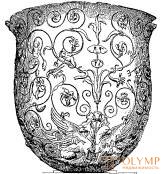
Fig. 432. Hildesheim Silver Crater
With the help of these vessels, it is most convenient for us to trace the development of Greek ornamentation in the Hellenistic era. As Rigl argued, this development consisted first of expanding the field of application of the ornament. In some vessels, such as the Hildesheim silver crater in the Berlin Museum (fig. 432) and the silver Nikopol vase in the St. Petersburg Hermitage, the entire surface is covered with antennae patterns in which the palmette and acanthus motifs are connected to various kinds of flower cups , approaching in form to nature and depicted with respect for perspective. Then, animal and human figures are increasingly becoming woven into this network of antennae. Light children's figures, scattered over the curvatures of the antennae on the aforementioned silver Hildesheim crater, have a purely Hellenistic, perhaps even pure Alexandrian character. Finally, we see as a foreshadowing of post-classical art a retreat from nature, namely, leaves and flowers, crowning only the stem. In conclusion, the acanth leaf, increasingly crowded out by a flat stylized palmetto and tendril, which clearly assumes the character of the stem, turns itself into a tendril.
Closely related to the reliefs of the Alexandrian metal vessels are "transformed in the spirit of painting" Hellenistic marble reliefs that served, in all likelihood, to decorate the walls. Their characteristic features are the unequal elevation of the image and the architectonic, or landscape character of the background, often turning into a real relief landscape.
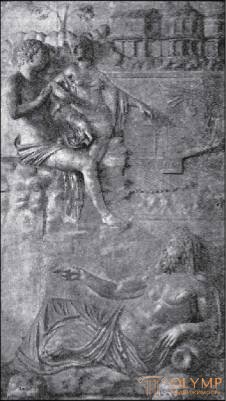
Fig. 433. Paris, Oinon and the river god. Marble relief. From the photo of Anderson
Это мы видим, например, в 12 рельефах Палаццо Спада в Риме, представляющих собой большие выпуклые картины на темы греческих героических сказаний, очевидно, скопированные с живописных произведений. Как грациозно, красиво и вместе с тем совершенно по-гречески сочинено изображение Беллерофонта, дающего пить Пегасу! В каком чисто пейзажном характере исполнен рельеф, представляющий прощание Париса с нимфой Ойноной (рис. 433)! До какой степени очевидно, что в рельефе "Персей освобождает Андромеду" воспроизведена картина того же содержания! Из прочих "роскошных рельефов" надо упомянуть о двух хранящихся в Венском музее, изображающих очень живо зверей и служивших, как полагают, украшениями колодца. Еще более многочисленны небольшие "кабинетные вещи" подобного рода. Мифологические сюжеты, как, например, "Вакхическая сцена" в музее Буонкомпаньи или "Полифем и Эрос" в музее Виллы Альбани в Риме, встречаются в этих произведениях реже, чем заимствованные из деревенской жизни и пейзажи вроде изображенного на ватиканском рельефе, на котором селянин, неся на спине пару гусей, гонит в город корову и теленка, или вроде двух подобных скульптур в Мюнхенской глиптотеке и символического пейзажа с пинией в Британском музее. Такие произведения вводят нас в действительно совершенно новый мир искусства.
Diadokhov coins are finely felt small relief portraits. Egyptian Ptolemaic coins compete with Syrian Antiochid coins for their vitality and similarity of royal portraits. In addition, in this era were distributed small images, engraved deep into or convex on the noble stones. Pirgotel, the famous stone carver of the times of Alexander the Great, spawned a whole school of artists like themselves. Stones with a convex image (cameos) often took on very large sizes in Alexandria: the most significant and precious works of this kind, the magnificent cameos of St. Petersburg Hermitage Museum and the Vienna Museum, with double images of Ptolemy II and Arsinoe (fig. 434), unusually masterful carved out of various layers of stone, by the very names of the persons depicted on them indicate their Alexandrian origin. Furtwängler also noted a peculiar little branch of the art of carving on hard stones. Then from semi-precious stones began to produce whole vessels with decorations of semi-exalted work. The most magnificent specimens of vessels of this kind are the onyx vase in the Braunschweig Museum (fig. 435) and the same bowl in the Neapolitan Museum (the so-called Tazza Farnesina); from the drawing inside this last one, depicting a festival on the Nile, it is easy to guess its place of origin.
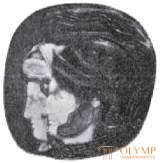
Fig. 434. Ptolemy II and Arsinoe. From the photo

Fig. 435. Onyx Alexandria vase. From the photo
Alexandrian round sculpture is as varied as the Alexandrian reliefs, but just like it, it produced few things in a strictly historical style and a sublime heroic spirit. There is no shortage of busts and statues of the Ptolemies, but it is impossible to determine with certainty who exactly these or other of them represent. On the contrary, the busts of some poets, in an idealistic and realistic way, discovered in Alexandria, are characterized by certainty characteristics. The beautiful marble bust of the blind singer Homer, with extraordinary expressiveness reproducing the physical blindness and at the same time the spiritual clairvoyance of the poet, is preserved in several specimens belonging to the main museums of London, Paris and Naples (Fig. 436). It is usually believed that the original of this bust was made for Homerion, the sanctuary of Homer, built in Alexandria by Ptolemy Philadelphus, although this statue, judging by its character, can be considered more ancient, as pointed out by Johann Sixx. In any case, it can be considered an excellent example of Greek idealized portraits, which slightly reflect the spirit of realism. The best example of real realistic Greek portraits, as a rule, exhibit the bronze, extremely expressive head of some Alexandrian poet, who used to be the head of Seneca. Copies of this work are in the British Museum and the Neapolitan National Museum (Fig. 437). Everything in this head is nature itself, imbued with an individual inner life.
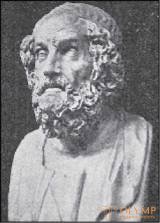
Fig. 436. Homer. Marble bust. With photos Alinari
In cases where the Alexandrian plastics of round figures created works of small size, they had quite realistic household character. Such, for example, are the basalt and bronze figurines stored in the Athens Museum, depicting typical Alexandria scenes. A very natural and vital is the bronze figure of a Nubian merchant who, with a monkey on his shoulder, squats beside the fruit he sells. No less realistic is the bronze figure of a street singer, the Paris Numismatic Cabinet (Fig. 438). A small silver figurine of a boy, who is nipped behind a goose ear, in the British Museum, apparently also from Alexandria. There are probably the same origin of grotesque figures of dwarfs, which, as we know now, in Egyptian cities we met quite often, playing the role of jesters or earning livelihood with amusing dances.
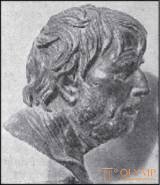
Fig. 437. Seneca. With photos Alinari
Along with small round figures, life-size genre figures also appeared. The composition of the boy with the goose is preserved in many copies; they are, for example, in the Vatican, Rome, the Louvre Museum, in Paris, and the Munich glyptotek. This group is considered to be a reproduction of the bronze original of the work of Boef, one of the few masters whose names have been preserved in the history of art since the Diadochi times. If Boef, as Pausanias reported, was a North African Greek (from Carthage), then all the more we can consider Alexandria as the place of his activity. This artist can also be attributed to the alteration of the “Boy pulling a splinter from his leg” (see fig. 344) from the old style into a Hellenistic realistic figure that has come down to us in a bronze statuette that belonged to the city of Rothschild, in Paris, and in a marble statue located in the British Museum. In them we can clearly notice, in all its sharpness, the upheaval that occurred in the sense of style. The question is not so clarified whether the Alexandrian or Pergamon piece should be considered a highly vital "The Drunken Old Woman" of the Munich Glyptotek, a figure with which the precious marble head has in Dresden Albertinum.
Undoubtedly, the beautiful marble personification of the reclining god of the River Nile, located in the Vatican, even if it is only a Roman copy of the Greek original, comes from Alexandria. Holding the cornucopia in her left hand and leaning her on the sphinx, the elder Nile in her right hand, resting on her knee, holds a bunch of ears. The hair on his head, soft and curling like river waves, falls behind him and flows all over the base. Sixteen baby geniuses, of which others are busy with the crocodile and ihnevmon (mongoose), climb up the figure of God, personifying 16 cubits of the periodic increase of water in the Nile. On the back side of the cap depicts a true Nile landscape. On the whole, this work is one of the most magnificent specimens of anthropomorphic landscape plasticity, engendered by Greek art, and according to this pattern, the river gods have been personified countless times until now.

Fig. 438. Nubian street singer. Bronze figure. By colignon
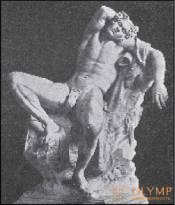
Fig. 439. Barberinsky Faun. From the photo
A significant number of other sculptural impersonations of land and water belong, probably, to the Hellenistic world, although there is no reason to consider their birthplace Alexandria. The figures of satyrs and Silens, besides the anthropomorphic landscape element, are still mixed with the mythological plot; but in the era under consideration, they increasingly receive landscape value. Suffice it to mention only the magnificent "Barberinsky Faun", the Munich glyptotek (Fig. 439), spread out on a rock and immersed in a deep sleep under the influence of hops. The sleeping posture is no better suited to the outlines of the rock; the forms of his body in all their particulars agree with the anatomical truth and at the same time respond to the angularity of a wild, forest creature; his whole position hints at the gross heaviness of the earthly elements personified by him. In the numerous figures of dancing fauns, the merry side of the plant nature is expressed. We see this, for example, in the charming large marble statue of the Villa Borghese Museum in Rome, and in the graceful little Pompeian bronzes in the Neapolitan Museum. Even more than in the figures of fauns and satyrs, the mythological typicality gives way to the anthropomorphic personification in the Hellenistic statues of sea deities. On the head of Neptune, the Chiaramonti Museum in the Vatican (Fig. 440), his hair seemed to stick together from the salty moisture into dense bunches, while his eyes look into the distance with the caring look of a sailor. Even more characteristic is the landscape element of the sea in the marble bust of the Ocean, the Pio-Clementine Museum in the Vatican (Fig. 441). Fish scales on the cheeks, chest and eyebrows from a distance allows you to guess in him the sea deity; two dolphins play in the bearding hair of his beard.
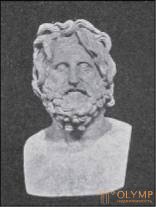
Fig. 440. Neptune. Marble bust. From the photo
In connection with the art of Alexandria, marble Hellenistic sculptures are usually of a voluptuous character, such as the sleeping Hermaphrodite, found in various copies (for example in the Louvre), and Aphrodite Kallipiga, the Neapolitan Museum; However, this relationship cannot be proved by actual data.
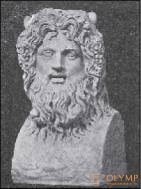
Fig. 441. The ocean. Marble bust. From the photo
Finally, there is a tendency to ascribe to Alexandrian art also the further development of relief ornamentation of sarcophagi, with the grandiose rudiments of which we have already become acquainted, considering the Sidon sarcophagi (see fig. 378, 412). The Fugger sarcophagus with relief depicting the battle of the Amazons, located in the imperial collection in Vienna, expresses the full Hellenistic flourishing of this branch of art. "The works of the Alexandrian direction, - said Gauzer, - only one are in close relationship with the sarcophagus sculpture." Most of the marble sarcophagi that have come down to us, decorated with embossed images, in any case refer only to the era of the Roman emperors. We will return to them. In the development we touched on, there were transitional stages; but the question of them has not yet shed enough light.
The art of Antioch on Orontes, the symbolic image of which, carved by Eutiides, reached us in the above-mentioned copy (see fig. 430), is not clearly outlined before us in its generality even after R. Förster's research. Although the colossal relief of the goddess of death, excised at the command of Antiochus Epiphanes from a rock near the city to commemorate his deliverance from the plague, hitherto looks gloomily and mysteriously at the inquisitive traveler, and although in the beautiful bronze group of fighters found in Antioch and transported to the Constantinople Museum we have a real work of art of the Seleucid era, which came to Europe because of the Bosphorus, but one cannot comprehend the nature of this art from these single remains.
In general, we know less about Hellenistic art on the Nile, Oronte and Tigre than about the art of more remote times and countries, and this still constitutes a sensitive gap in the history of the arts.
Что бы оставить комментарий войдите
Комментарии (0)